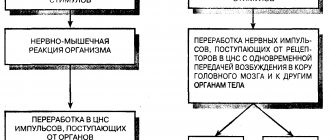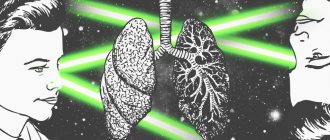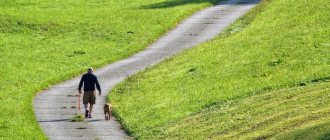Relaxation is a conscious reduction in muscle tone. Relaxation can be achieved through the use of special techniques, exercises or medications. The goal of relaxation in any of the techniques is to achieve complete relaxation of the body, thanks to which an increase in performance and a decrease in mental and physical stress is achieved, which has a positive effect on the psyche.
Relaxation techniques are quite popular in yoga, psychotherapy, hypnosis and various health systems. Relaxation techniques are considered to be a method akin to meditation, which are both effective ways to combat stress.
Various relaxation methods are especially effective for people who have increased muscle tone, since it is the cause of many diseases. People with decreased muscle tone experience less of the relaxation effect. When a stress factor affects a person, muscle tension is created in the body. This tension is a defensive reaction, preparing the body for action. The body receives a danger signal - stress, and turns on active defense.
Stress has come a long way of evolution, from the fear of a creeping tiger to the modern stress of people - problems with writing a diploma, civil strife with superiors. Such stressors require long and intense thinking. It turns out that the muscle tone remained as strong as before, because there was no discharge, but on the contrary, everything had accumulated inside and put pressure on the person.
Chronic stress, small or insignificant, becomes an obstacle to the spontaneous release of muscle tension and the muscle clamps formed by it. Muscle tension absorbs a large amount of energy, interferes with good blood flow, makes attention scattered and the state tense.
Many people know about the relaxation method, that it is a very useful way of restoring strength, which gives an invaluable effect, it does not require material investments and is quite affordable for every person. Despite daily stress, a person can protect himself from their negative impact in this way.
The effectiveness of systematic relaxation sessions is recognized by modern psychotherapists. According to the theory of the positive impact of relaxation on a person’s mental state, there is a specific strong connection between the mind and body and a person needs to maintain it. An important point in psychotherapy using relaxation techniques is generalization. Generalization is the spread and consolidation of the effect. If you do not do it systematically and superficially, then the effect will be just as temporary and of poor quality. Through regular, persistent practice, you can achieve generalization and long-term positive effects of relaxation on the individual.
Introduction
“People who know how to relax not only have greater mental flexibility, but are also better able to deal with stress.”
R. Copelan
Hello, dear friend! You've probably heard about such a phenomenon as relaxation. Many people underestimate and underestimate this very effective technique for gaining health. But in vain! I pay a lot of attention to HER, because... Relaxation is the basis for your own development, be it the development of personal qualities, the cure of serious illnesses, or the development of intuition.
For me personally, relaxation is a very important tool in the life of a modern person, which is filled with physical and mental tension, as well as such a common phenomenon as stress.
You may be surprised, but I mastered many relaxation techniques at an early age, and the word “meditation” became a staple in my vocabulary. And for this I am grateful to my parents, who gave me a good upbringing, based on which I followed the path of self-development and improvement.
Thank you Mom and Dad, you are my best teachers and friends!
Complex 3. Meditation
The most general definition of the concept of “meditation” in psychological dictionaries is: “a method of mental training in which intense, penetrating reflection occurs, immersion in an object, an idea, which is achieved by concentrating on one object.” The recommendations collected in this block concern how to conduct a visual meditation session on your own. Visual meditation is a variation of traditional meditation that is based on the use of not only visual meanings, but also the senses: taste, touch, smell and sound. When used as a relaxation technique, visualization involves imagining a scene in which you feel free from tension and anxiety.
Set of exercises:
- Choose a quiet and secluded place, with nothing to distract you. Find a comfortable position. It is not recommended to lie down; it is better to sit on the floor, in a chair, or try sitting in the lotus position.
- Select a focal point. It can be internal - an imaginary scene, or external - a candle flame. Therefore, the eyes can be open or closed. At the beginning, it is very difficult to concentrate and avoid distracting thoughts, so the focus point should have a strong meaning, understandable and clear, so that you can return to it at any time.
- The focal point should definitely be something calming for you. It could be a tropical beach at sunset, a forest clearing, or an orchard in a village near your grandparents’ house, where you visited as a child. Visual meditation can be done in silence, or you can turn on relaxing music or an audio recording with meditation tips.
- Try to use all your senses as much as possible. For example, your focal point is a forest. Imagine that you are walking through a clearing, and cold dew falls on your feet, you hear the singing of many birds, smell the pine, breathe in the clean air deeply. The picture should be as lively as possible. Meditate for 15-20 minutes.
Remember, relaxation will not save you from problems, but it will help you relax and distract yourself from unimportant details, so that later you can tackle the solution with renewed vigor.
What is relaxation
“Walk very slowly and take each step very consciously.”
Siddhartha Gautama Buddha
Relaxation, as a special method of relaxation, appeared abroad in the 30-40s of the 20th century, and was aimed at relieving muscle and nervous tension using specially selected techniques. But relaxation itself, as a technique, appeared a long time ago, but came to the West later. With the development of body-oriented psychotherapy, other relaxation methods also developed. And the method of muscle relaxation is historically and still is the main one.
But much attention to relaxation techniques has increased only since the second half of the 20th century, when the pace of life sharply increased in developed countries. And this is not surprising, because... people have become more susceptible to the destructive effects of psychological stress.
Steps in Relaxation
The first step in relaxation is the body. At this moment, a person with his attention looks for all the “clamps” and tensions in the body, consciously relaxing them.
The second step is to relax the mind. Many people start out crazy and end up not succeeding. The mind can only be relaxed when the body is relaxed.
When you manage to relax your body and mind, relaxation of feelings, emotions, and heart begins. But this process can no longer be controlled; it comes on its own when a person is ready for it. And a state of complete emotional calm will come only when a person learns to control the flow of negative thoughts.
The final result of relaxation is complete relaxation. This is the moment when a person “ceases to exist.” OSHO compared this state with the moment of realization of enlightenment, Christ consciousness. And such relaxation brings the greatest joy, full of bliss.
Personal transformation is only possible when you realize that your body and your mind are tense. Realizing this is the first step towards change. A state of relaxation (or a state without tension) should become your essence. Many modern experts in this field treat relaxation as some kind of “technical” skill that needs to be performed while lying on a surface. But complete relaxation is something more.
It should be present in all areas of life, and not just “in bed” or “on the couch.”
Relaxation without awareness of your body is not relaxation, but only its “technical” part. Frederick Perls's book “Workshop on Gestalt Therapy” describes in great detail experiments on awareness of one's body and one's habits. I really liked one of the experiments where students were asked to chew a piece of food thoroughly. And only swallow it when it is liquid enough to drink. I recommend you try it too! The essence of this experiment is the feeling of being present in action. Usually, when we eat, we don’t eat, we do everything we can (watch TV, read a book, listen to the news, etc.), but we don’t eat. This experiment is precisely aimed at fully realizing this action.
Massage therapist tips for relaxing the body
Relaxation, as an integral part of a successful and fulfilling life, plays an important role in the hustle and bustle and the huge flow of negative influences on a person. “The effect of massage is the power of life” in the words of Hippocrates.
With the help of a massage, you can not only achieve complete relaxation, but also calm the nervous system, enrich the blood with oxygen, which will force you to reboot the “brain”. Feel the tone and surge of strength throughout the entire body, as well as an important psychological component - feel the warmth of human hands. Tactile contact also has a positive effect in cases of prolonged depression.
One of the techniques for relaxing the body is massage. Numerous techniques and directions will help you achieve positive results in relaxation. Massage affects on three levels: bodily, nervous system, emotional. The Anti-stress program, for example, will relieve overstrain. An ordinary classic relaxing general massage has no contraindications and is easy to perform.
Relaxing massage and techniques for performing it
Immerse yourself in an atmosphere of calm and tranquility, mentally detaching yourself from the everyday hustle and bustle and routine, using special massage techniques that are available to everyone. They will give relaxation to the body, emotionally refresh, relieve fatigue, anxiety, anxiety and help to escape. A relaxing classic massage includes light, pleasant movements.
- stroking,
- trituration,
- kneading,
- pat,
- vibration.
The main emphasis is on the back, then the neck, limbs, head, face. Moreover, the direction of movement must strictly coincide with the direction of venous blood, driving it through the vessels. You can add the effect of aromatherapy to the massage procedure itself by using candles and sticks with pleasant aromas. The music will also create an appropriately relaxing atmosphere for maximum effect. Traditional and non-traditional, they will be a wonderful alternative or addition to other relaxation practices.
How to forcefully relax in 1 minute
Anxiety and stress, as a protective reaction of the body, overload our system, forcing it to work to the limit, and ultimately the person gets sick or experiences depression. You can help yourself to relax under conditions of stress and tension without outside help, eliminating anxiety and panic in a minute, using an express course.
How to completely relax in 1 minute?
It is better to practice the technique for the first time at home in a familiar environment and in comfortable clothes. How to force yourself to come into harmony with yourself and relax in a minute:
- Find a quiet place.
- Turn off the music, creating complete silence.
- Think only about what you need to achieve complete relaxation, freeing them from other extraneous thoughts.
- Work on comparison and contrast. To feel relaxation, create tension. You should clench your hands tightly into fists for 10 seconds. Then place your hands loosely on your knees and feel the difference. Next we tense our forearms, bending our elbows and pressing our fists to our forearms.
- Back of the arms: Straighten your arms as much as possible.
- We raise our shoulders to our ears.
- Throw your head back.
- Raise your eyebrows as if asking.
- Close your eyes tightly.
- Clench your teeth tightly.
- Press your tongue on the roof of your mouth.
- Press your lips very tightly.
- Inhale deeply and hold your breath.
- Form abdominal press.
- Arch your back and squeeze your buttocks.
- Straighten your leg and bend your toes.
Each item will take 10 seconds. Practicing this technique will help you get to know your body better and further work on individual parts of the body that require relaxation.
Benefits of relaxation
“Hell is when you are all tense, and heaven is when you are relaxed. Complete relaxation is heaven.”
OSHO
Relaxation is an effective means of combating stress and psychosomatic diseases, and also provides a general healing effect. It is used not only in psychotherapy, but in many healing systems, in Buddhism, yoga, wushu, and is also the most important stage of entering a meditative trance.
So, what are the benefits of the relaxation process:
- Muscle tension, accompanied by pain and stiffness of movement, is relieved.
- The energy balance in the body is restored.
- The circulation of lymph and blood improves.
- All organs are enriched with oxygen.
- All body functions are normalized (digestive, respiratory, metabolic.)
- Psycho-emotional balance is restored.
- The consequences of stressful situations are eliminated.
- Chronic tension is eliminated
- The body gets proper rest
- Hidden reserves for self-healing are launched.
And I am sure that this is not a complete list and it can be continued indefinitely. Based on the above, we can conclude that relaxation promotes effective mental activity and the discovery of talents and abilities. Increases productivity and activity.
Have you ever felt the urge to practice relaxation right now? J
How to calm down easily
Each person can consciously control the degree of their own tension or relaxation, if we are not talking about any serious disturbances or stress. In the case of the simplest techniques, there is an option when you need to instantly pull yourself together and get complete liberation from your worries.
There are special techniques for this. If a person is very worried, you need to take a deep breath, hold the air for a few moments and exhale noisily. Then repeat the exercise several more times. When the lungs and blood are saturated with oxygen, the brain receives a signal to relax, and anxiety will gradually disappear.
If a person needs to immediately calm down, there is another compensation technique. To do this, you need to visually imagine some positive moment in your own life.
Usually, adult people remember their childhood. When you remember pleasant experiences from your life, the negativity will fade into the background, gradually being replaced by a feeling of peace and happiness.
Another simple technique is counting. To do this, count to 10 or more until stress begins to fade into the background.
Types and techniques of relaxation
“Why are you like a bundle of nerves? Relax!!!"
Men in Black
There are many techniques, techniques and methods aimed at relieving tension and entering a state of relaxation. Conventionally, we can distinguish several main types of relaxation:
- By time (long-term, occurring during sleep and short-term, which is subsequently replaced by stress).
- According to the method of execution (muscular and figurative).
- By origin (natural, occurring after physical exertion and purposefully caused, created under artificial conditions).
- By depth (superficial and deep).
- According to the speed of occurrence (emergency and prolonged).
- By the scale of impact (total and local).
There are a lot of types, isn't it? But there are many techniques. Let's look at the main ones:
- Psychophysiological relaxation technique. In this technique, muscle relaxation occurs through mental work and physical exercise. It is important to observe the following conditions: absence of bright light, comfortable temperature, loose clothing, absence of noise and other external irritants. It is not advisable to practice relaxation on a full stomach, because... the digestion process interferes with relaxation.
- Progressive muscle relaxation. This technique is considered one of the most effective techniques and was developed by American scientist and physician Edmund Jacobson in the 1920s. The principle of the technique is very simple: in order to achieve deep relaxation of all muscles, you need to strongly tense all these muscles simultaneously or sequentially.
- Abdominal breathing. This method is considered one of the simplest. It is performed as follows: inhale slowly through the nose (you need to breathe with the diaphragm, not the chest), hold for a few seconds. Exhale slowly through your mouth. The exhalation should be twice as long as the inhalation.
- Self-hypnosis. Relaxation is achieved by repeating a suggestive phrase, for example: “The toes of my left foot are completely relaxed.”
- Medicinal relaxation. It is achieved through the use of special medications – muscle relaxants.
- Physiotherapy. Warm baths and gentle massage promote muscle relaxation.
LiveInternetLiveInternet
The ability to relax at will is a very important skill that everyone should have. Life in the modern world is very stressful and stressful, both mentally and physically. This includes workers in the technology and computer industries who sit for hours in front of a computer screen, resulting in hours of strain on certain muscles and joints.
This also applies to other workers, for example those who spend a lot of time driving, especially in heavy traffic, which puts a lot of pressure on the psyche. These days, stress is a very common word as people blame stress for many of their problems. People find it difficult to relax. This article contains five of the best ways for healthy relaxation.
Relaxation Technique 1: Breathe to relax and calm down
Breathing control is a fundamental skill needed to quickly calm down and relax. By consciously controlling your breathing, you can temporarily distract yourself from stressful thoughts. Some breathing techniques provide a quick calming effect.
I suggest the following breathing exercise:
- If possible, lie down or sit comfortably.
- Close your eyes and focus your attention on your nostrils as air enters them.
- Take a slow, deep breath through your nose. Please note that the air entering the nose is cold.
- Hold your breath for a few seconds, keeping your attention at the same point.
- Exhale slowly and calmly through your nose. Notice that the air leaving the nostrils is already warm.
- Practice for a few minutes until your disturbing thoughts go away and you feel calm.
This exercise uses several techniques to calm you down:
- Closed eyes and a comfortable position are already a little relaxing.
- When you breathe slowly and hold before exhaling, your heart rate decreases. This is especially useful if you are agitated for any reason and need to calm down quickly. In stressful situations, you can perform this exercise without a preparatory stage, if there is no time or place for this.
- Concentrating on the movement of cold and warm air through the nostrils occupies the brain and distracts you from other, negative thoughts.
However, it is even easier to improve your breathing and cope with stress and negative experiences. You need to slowly draw air into your lungs, then hold the air, slowly counting to four. In the same way, exhale for four counts and hold your breath again for four counts without inhaling.
With this breathing practice you can kill two birds with one stone. First, willy-nilly, force yourself to breathe slowly and avoid hyperventilation. Secondly, distract the excited mind from the problem that caused a violent reaction and switch it to counting from one to four.
Relaxation Technique 2: Progressive Muscle Relaxation (Jackopson)
Progressive muscle relaxation is the simplest technique from which many more complex relaxation techniques have emerged. The progressive relaxation system is named after Harvard physiologist Edmund Jacobson. It is based on the fact that after strong tension the muscle automatically relaxes.
Before you start doing the exercises, you need to take the most comfortable position in space for you. It is advisable that the position be sitting, since relaxing the neck muscles involves moving the head.
However, to relax according to Jacobson, you can lie on your back on a hard, flat surface, close your eyes and select an object: to begin with, a small group of muscles - for example, calves, abdominals, hands. This group must first be strongly tensed (although in order to feel them), and then sharply relaxed - and completely feel this relaxation.
The number of muscles involved in relaxation must be gradually increased. Classic progressive relaxation scheme: sequential movement (tension-relaxation) from the neck muscles to the muscles of the tips of the legs.
When performing the exercise, do not strain your muscles too much, and do not strain muscles that do not belong to the specific group mentioned in this step. After tension relaxation, the muscles should be more relaxed than before the tension.
Sit comfortably in a chair or lie down. Take a few slow breaths in and out. Then start in the following sequence.
1. Hands. The first exercise is aimed at relaxing the arm muscles. This is a simple clenching of the hand into a fist. The exercise must be repeated 5 times. Do not forget that any pain, including that received as a result of the exercise, can have nothing to do with relaxation. After the task is completed, shift the focus of your attention to the sensations in your hand. You may not notice anything special the first time. This is normal, because for so long you have not paid attention to what is happening in your body. Except for the pain, of course.
* After 4 days, you add the following exercise: spread your fingers on your hand to such an extent that you feel tension. Yes, it should be just tension, NO pain. In this exercise, if you look at it from above it resembles an asterisk.
* Next exercise: tense the hand, bringing the palm towards the body. So that the hand and wrist form a right angle. Fingers pointing up.
*The exercise is similar to the previous one, only in this case the fingers point down.
2. Biceps and triceps. Next, bend the arm at the elbow joint, tensing the muscles of the forearm. Biceps are tense (tighten the muscle, but shake your hands to make sure they are not clenched into fists); relaxed (put your hands on the chair).
* We do the exercises in reverse: we try to straighten the arm as much as possible to feel the tension in the triceps.
3. Shoulders. Shrug your shoulders and keep them as tense as possible and still comfortable for you. Pull your shoulders back (gently); relax. Push them forward (push); relax.
4. Neck (lateral muscles). We work the neck muscles. Shoulders are straight, relaxed, slowly turn your head to the right as far as possible; relax. Turn left; relax.
*Neck (back muscles). We throw our head forward, pressing our chin to our chest. We keep our muscles tense. Relax.
*Neck (front muscles) Smoothly tilt your head back. We repeat the exercise 5 times. We concentrate on the sensations occurring in your muscles.
If you conscientiously approached the development of the technique and practiced it for at least 15 minutes a day, at this stage you will already be closer to high-quality relaxation of your body. This occurs due to the generalizing function of our brain. Good relaxation of the arm muscles for 10 minutes leads to the spread of relaxation throughout the body.
5. Breathing. Inhale as deeply as possible - and then a little more; exhale and breathe normally for 15 seconds. Let all the air out of your lungs - and then some more; inhale and breathe normally for 15 seconds.
6. Back. Press your shoulders against the back of the chair and push your body forward so that your back is arched; relax. Do this exercise with caution or not at all.
7. Buttocks. Squeeze your buttocks tightly and lift your pelvis off the seat; relax. Press your buttocks into the chair; relax.
8. Hips. Stretch your legs and lift them 15 cm from the floor or footrest, but do not tense your abdominal muscles; relax. Press your feet (heels) into the floor or footrest; relax.
9. Belly. Pull your stomach in as much as possible; relax completely. Puff out your stomach or tense your muscles as if you are preparing for a blow; relax.
10. Calves and feet. Lift your toes (without lifting your legs); relax. Raise your feet as high as possible (beware of cramps - if they occur, or you feel them approaching, shake your feet); relax.
11. Toes. Relax your legs, press your toes to the floor; relax. Raise your toes as high as possible; relax.
12. Face. Relaxation of the facial muscles completes the set of exercises.
* Mouth. The mouth is open as wide as possible; relaxed. The lips are brought together and compressed as tightly as possible; relaxed.
* Tongue (protruded and retracted). Open your mouth and stick out your tongue as far as possible; relax (let it lie freely on the bottom of the mouth). Pull it back into your larynx as deeply as possible; relax.
* Tongue (palate and bottom). Press your tongue to the roof of your mouth; relax. Press it to the bottom of the mouth; relax.
*Eyes. Open your eyes as wide as possible and feel the tension in the frontal muscles, wrinkle your eyebrows; relax.
* Close your eyes as best you can without disturbing your comfort. This will allow you to contract a large number of periocular muscles.; relax. Make sure you completely relax the muscles in your eyes, forehead and nose after each strain.
* The last exercise tones the lower part of the face. We imagine that we really want to kiss someone - we stretch our lips into a tube.
You must understand that mastering this method will require you, first of all, to be regular. The order of the exercises matters; they should be mastered in the prescribed order.
The period of familiarization with each subsequent exercise should be at least 4 days. This means that on the first training day you only do one exercise. After 4 days, add another one and so on. This is done with the aim of training muscle memory, which, as Jacobson’s relaxation is mastered, will over time automatically “turn on relaxation” when performing at least one exercise. To obtain such a result, you will need about 3 months, but it should be noted that with regular implementation of the complex, you will receive tangible results within a few weeks.
Important: Remember that a state of relaxation cannot occur in the presence of pain. Therefore, you should be careful and not overdo it when doing the exercises.
Disadvantages of Jacobson's progressive relaxation system: it takes a long time and can only work in a quiet environment where you can lie down and practice relaxation along with deep breathing. A person in standard working conditions has few such opportunities, so there are more adapted techniques.
Relaxation Technique 3: Calming Visualization
Visualization is a powerful tool of consciousness. Studies have shown that the subconscious cannot distinguish real events from visualized ones. Therefore, visualized images have a significant impact on consciousness.
- Sit comfortably or lie down. Close your eyes and take a few slow breaths. Turn off all communications to avoid distractions.
- Imagine yourself in a quiet and peaceful place of your choice. This could be a deserted beach, a flowery meadow, a forest, a boat, or any other place where you feel relaxed.
- Hold this image and, experiencing the bliss of the moment, imagine all the positive feelings that arise in this place.
- The more realistic the image, the more positive emotions you will receive.
- When you feel comfortable and calm, slowly exit the imaginary world and return to the real one.
Relaxation Technique 4: Alpha and Theta Stimulation Using Audio Programs
The human brain functions in different states of consciousness and attention. The different levels are distinguished by the frequency of the brain waves, as can be seen in the EEG (electroencephalogram). These levels are named after the letters of the Greek alphabet.
The general agreement regarding brain wave patterns is as follows:
- Beta – 14 Hz and higher. A state of readiness, an active state of the brain. Associated with thinking and wakefulness.
- Alpha – from 8 to 14 Hz. Relaxed state of the brain. Associated with immersion in dreams and general relaxation.
- Theta – from 4 to 8 Hz. A state of deeper relaxation. Light sleep. Hypnosis. Meditation.
- Delta – below 4 Hz. Deep dream. Unconscious state.
The alpha state is recognized as the healthiest brain state as it is associated with relaxed brain activity. This state is also used as the basis for advanced mind control techniques such as meditation, the Jose Silva method, and others.
You can stimulate the alpha wave activity of the brain using special audio recordings, the effect of binaural beats, to directly influence the brain and force it to work at the desired frequency. To reduce stress, binaural beats are layered over the sounds of falling rain, which in themselves have a calming effect.
There are many relaxation recordings available online, such as Reiki Healing Music.
Relaxation Technique 5: Entering the Alpha State of Consciousness on Your Own
You can learn to enter the alpha state of consciousness on your own, without using special audio recordings. Of course, there will be a learning curve, but you will be able to control your brain better. José Silva has dedicated his life to developing technology to better harness human potential. His work is based on the ability to enter and remain in the alpha state of consciousness.
There are several ways to stimulate the alpha state. Here's the way that works best for me:
- Sit comfortably or lie down with your eyes closed. Take a few deep breaths.
- Imagine the number 3 and say “Three”
three times. - Imagine the number 2 and say “Two”
three times. - Imagine the number 1 and say “One”
three times. - Imagine the number 10 and say “I am relaxing
. - Imagine the number 9 and say “I calm down
. - Imagine the number 8 and say “I am becoming more and more relaxed
. - Imagine the number 7 and say “I am becoming more and more calm
. - Imagine the number 6 and say “My mind is clear and serene
. - Imagine the number 5 and say “My whole body is relaxed
. - Imagine the number 4 and say, “I’m so relaxed that I can’t feel my own body weight
. - Imagine the number 3 and say “I am completely calm
. - Imagine the number 2 and say “I am completely relaxed
. - Imagine the number 1 and say “I am completely calm and completely relaxed.
I'm in alpha .
Based on materials from https://irudko.ru, https://bigideas.ru
See also:
How to stay calm in difficult situations
Strong relaxation program - 12 minutes of nirvana
Elements of life that can and should be simplified
Myths about relaxation
“If you relax, they will start using you. Therefore, we must stand aside from what is happening. But where is this side and how to stand in it?
Gia ( GIA)
MYTH 1
Relaxation is a natural state that anyone can enter without prior preparation. This is wrong. If you come home after a hard day, lie down on the sofa and consider this relaxation, you will be wrong. Relaxation involves comprehensive deep relaxation of the mind and body. If, having relaxed your body, you carefully think about the events of the day and make plans for the future, this will not allow you to truly relax, restore strength and harmonize all processes in the body.
MYTH 2
Relaxation is relaxation of the body. This is not entirely true. Relaxation of the body is included in the concept of “relaxation”, but is not equivalent to it. High-quality relaxation with an obvious effect is possible only with complete relaxation of not only the body, but also the mind. Clearing the mind by reducing and even stopping mental chatter is a prerequisite for deep relaxation.
MYTH 3
Relaxation is a necessary measure in special cases to relieve tension or the effects of stress. This is a misconception. Only regular relaxation will allow you to achieve the best physical and mental state.
Complex 1. Breathing exercises
Deep breathing allows you to relax, regardless of the thoughts that overcome a person. It is not for nothing that in films, when police or doctors arrive at the scene, they advise victims to first of all breathe deeply and evenly. In stressful situations, breathing quickens and the body lacks oxygen. Deep breathing promotes the flow of this vital gas into the brain and all cells in the required volumes.
Exercises:
- Inhale and exhale slowly and deeply through your nose, counting from 1 to 4 as you inhale and exhale. This exercise is very easy to do, and it is especially effective if you cannot sleep.
- Try relaxing your shoulders and upper chest muscles as you breathe. Do this consciously with each exhalation. The fact is that in stressful situations, when a person is tense, the diaphragm muscles are not used for breathing. Their purpose is to lower the lungs down, thereby expanding the airways. When we are excited, the muscles of the upper chest and shoulders are more often used, which do not contribute to the full functioning of the respiratory organs.
- Nadi Shodhana. A yoga exercise that helps you become more active and focused; According to experts, it acts like a cup of coffee. With the thumb of your right hand, you need to close the right nostril and inhale deeply through the left (for women, use the thumb of your left hand to close the left nostril and inhale through the right). At the peak of inhalation, you need to close your left (right for women) nostril with your ring finger and exhale through your mouth.
- Sit up straight or lie on your back. Place one hand on your stomach, the other on your chest. Inhale air deeply through your nose, while the hand on your stomach should rise and the hand on your chest should move only slightly. Exhale through your mouth, while the hand on your stomach again drops, and on your chest practically does not move. In this case, breathing will occur using the diaphragm.
Fragrances for relaxation
“Learn to relax, if you are relaxed, you have the key to the imagination, if not, you will have to be content with the key to the intellect.”
Dennis Hopper
Since ancient times, people have known about the amazing properties of odors and used them in many areas of their lives. It's no secret that every day our sense of smell detects a huge number of different aromas. And they all affect our mood and well-being. A special role among odors that have a beneficial effect on the human body is given to incense (as essential oils were previously called).
Properly selected aromas can contribute to complete relaxation.
There is an ancient table for selecting essential oils to restore harmony. I will give some recommendations from it:
- For envy, moral “vampirism”, aggression: lemon balm, rose, juniper, lemon.
- Restoring human energy after overwork: basil, coriander, geranium, grapefruit, ginger, pine, lavender.
- Elimination of post-stress conditions and depression: bergamot, geranium, grapefruit, lemon balm, rose, lemon.
- Quick recovery from physical illnesses, injuries: fennel, pine, mint, rose, cinnamon.
- Strengthening determination and self-confidence: eucalyptus, lemongrass, tangerine, rosemary, thyme, yarrow, juniper, cloves.
- Joy in love, erotic: bergamot, ginger, jasmine, patchouli, rose, sandalwood, ylang-ylang, nutmeg, lavender.
- Preserving peace and warmth in the family: jasmine, tangerine, rose, vanilla, incense, orange, apple blossom.











